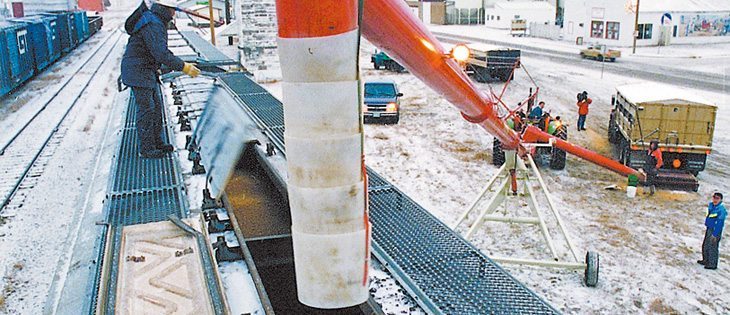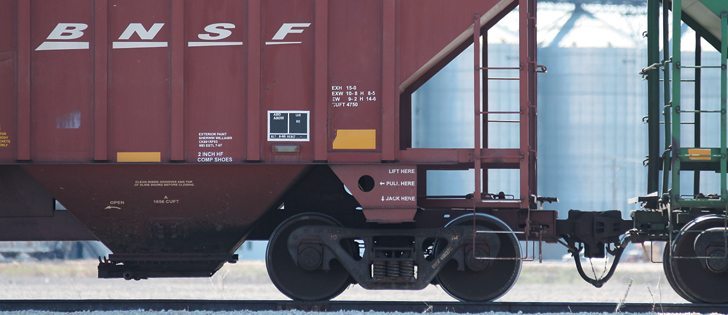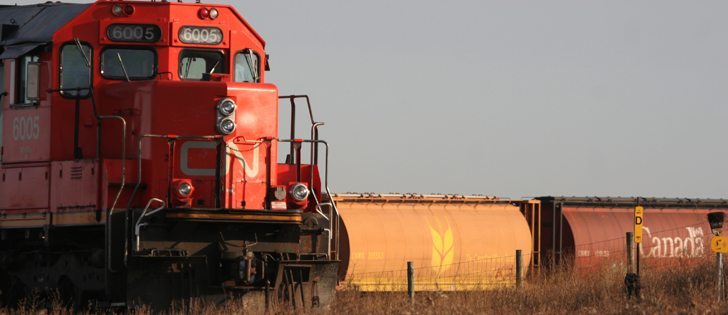I am a farmer and the chair of a newly formed new generation co-operative that bought a branch line from Canadian National Railway one year ago.
The branch line runs from Camrose to Alliance, Alta., a distance of 100 kilometres.
We bought the line from Alliance to Highway 56 and then we have a running rights agreement with CN from Highway 56 into Camrose, a distance of 16 km.
The shortline has heavy steel track (132 pounds) and has six sidings of the same steel, each 800 metres long. The shortline is a fabulous resource that we could not allow to be abandoned.
Read Also

Higher farmland taxes for investors could solve two problems
The highest education and health care land tax would be for landlords, including investment companies, with no family ties to the land.
We had an excellent first year of operation, but we are now concerned about our future if the Canadian Wheat Board is dismantled.
We previously operated as a producer car group with CN providing service. Now that we own the line, we provide our own power.
Since 2003, our group has moved close to 5,000 producer cars: 4,975 cars of CWB wheat and barley and 25 cars of non-board grain.
We have been actively trying to move canola and peas because they are popular crops in our catchment area, but as you can see, we have had limited success to date.
If the CWB were to be dismantled, we at Battle River Railway are concerned about our ability to move profitable numbers of producer cars. We fear that we may encounter as much difficulty moving wheat as we now experience moving peas and canola.
It is no secret that big grain has been trying to kill producer cars for at least 20 years. The momentum reached a crescendo when they were able to convince our politicians that free stocks of canola should not be all-owed to accumulate in terminal positions but instead had to be delivered into an existing sale.
The movement of canola in producer cars stopped Immediately, and we have been struggling to get it going again.
Producer cars work for board grain because the CWB has been organizing our sales. Our producer car deliveries are automatically included in their sales.
Short-line railways and producer car shippers have also had trouble competing in non-board grain because big grain and big rail have made it impossible for these groups to access 50 and 100 car tariff incentives.
That freight incentive, which is already coming out of farmers’ pockets, is the difference between being price competitive or not.
This agreement between big grain and big rail makes it impossible for small players to compete. It also downloads all the costs of grain accumulation onto farmers.
Many farmers now view the cost of ownership of a super B as a necessary evil. They have internalized the expectation of moving their grain long distances at their own expense.
I think it is time farmers began realizing that there is something unfair about bearing all the negative consequences of this new system of grain accumulation and transportation.
The right to access producer cars is enshrined in the Canada Grains Act. Exercising the opportunity to load producer cars gives farmers another choice in the marketing of their grain. They are a viable option if a farmer or group of farmers is having difficulties coming to terms with grain buyers.
The loss of the opportunity to access producer cars either because of legislation or because railways refuse to provide practical service would be a terrible loss to all farmers.
Ken Eshpeter is chair of the Battle River Railway NGC Inc. in Daysland, Alberta.















